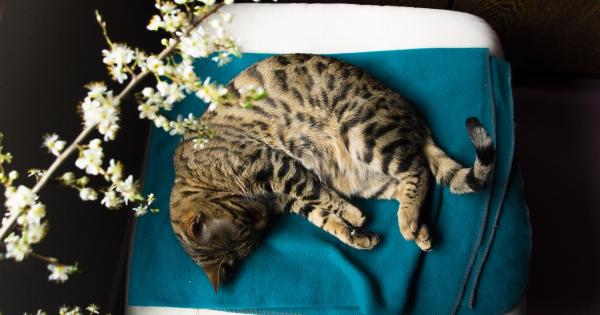The Bengal cat is a domestic breed known for its beautiful coat and distinct markings. However, this breed is also prone to certain health issues, particularly in relation to vision.
It is crucial for Bengal cat owners to be aware of these potential problems and take steps to protect their pet’s vision. In this article, we will discuss common vision issues seen in Bengals and provide useful tips on how to safeguard their eyesight.
1. Understanding Bengal Eye Colors
Bengals are well-known for their captivating eyes, which can come in various colors including gold, green, and blue. It is important to note that eye color in Bengals can change as they mature.
Kittens are typically born with blue eyes, which may later change to their permanent color. However, the color change process can take several months, so don’t be alarmed if your Bengal’s eye color transforms during this period.
2. Common Vision Issues in Bengals
While Bengals are generally healthy cats, they are prone to certain eye conditions. Some of the most common vision issues seen in this breed include:.
2.1 Cataracts
Cataracts are clouding of the lens or lenses in the eyes, resulting in blurry vision and eventually blindness if left untreated. Bengals can develop cataracts due to genetics, eye trauma, or other underlying health conditions.
Regular eye examinations by a veterinarian are crucial for early detection and prompt treatment.
2.2 Glaucoma
Glaucoma is a condition characterized by increased intraocular pressure, which can damage the optic nerve and lead to gradual vision loss.
This eye disease is common in Bengals and can be either primary (inherited) or secondary due to other ocular issues. Regular monitoring of intraocular pressure and timely treatment are crucial to prevent severe damage.
2.3 Progressive Retinal Atrophy (PRA)
PRA is a group of genetic eye conditions that cause the gradual deterioration of the retina, eventually leading to blindness. Bengals can be affected by various forms of PRA, each with different progression rates and symptoms.
Genetic testing is highly recommended for Bengals to identify carriers and reduce the risk of passing on these conditions.
2.4 Persistent Pupillary Membrane (PPM)
PPM is a congenital condition in which strands of tissue, remnants of fetal blood vessels, persist in the eye after birth. Depending on the severity and location, PPM can cause vision impairment or even serious complications.
Regular eye examinations can help identify and manage PPM in Bengals.
3. Tips for Protecting Bengal Vision
As a Bengal owner, there are several steps you can take to protect your cat’s vision and ensure their ocular health:.
3.1 Regular Veterinary Check-ups
Schedule regular veterinary check-ups for your Bengal cat, including comprehensive eye examinations. Early detection of any vision issues allows for prompt treatment and better management of the condition.
3.2 Monitor Changes in Behavior
Pay attention to any changes in your Bengal’s behavior that may indicate vision problems. This could include increased clumsiness, bumping into objects, or difficulty navigating previously familiar spaces.
Take note of these changes and consult your veterinarian if you have any concerns.
3.3 Provide a Balanced Diet
A well-balanced diet rich in essential nutrients, including vitamins A, C, and E, can support overall eye health. Consult your veterinarian for dietary recommendations specific to your Bengal’s needs.
3.4 Avoid Smoking
Exposure to cigarette smoke can have detrimental effects on your Bengal’s eyes and overall health. Avoid smoking near your cat and ensure that they are not exposed to secondhand smoke.
3.5 Keep the Environment Safe
Bengals are naturally curious and agile cats. Safeguard your home environment by removing any hazards that could potentially harm their eyes, such as sharp objects or toxic plants.
3.6 Practice Proper Eye Hygiene
Regularly clean your Bengal’s eyes with a gentle, veterinarian-recommended eye solution. This can help prevent the build-up of debris or discharge that may lead to infections or irritations.
4. Conclusion
While Bengals are strikingly beautiful cats, their vision can be prone to certain issues.
By understanding these potential problems and implementing preventive measures, such as regular veterinary check-ups and a safe environment, you can ensure that your Bengal’s vision remains healthy and they enjoy a high quality of life.






























